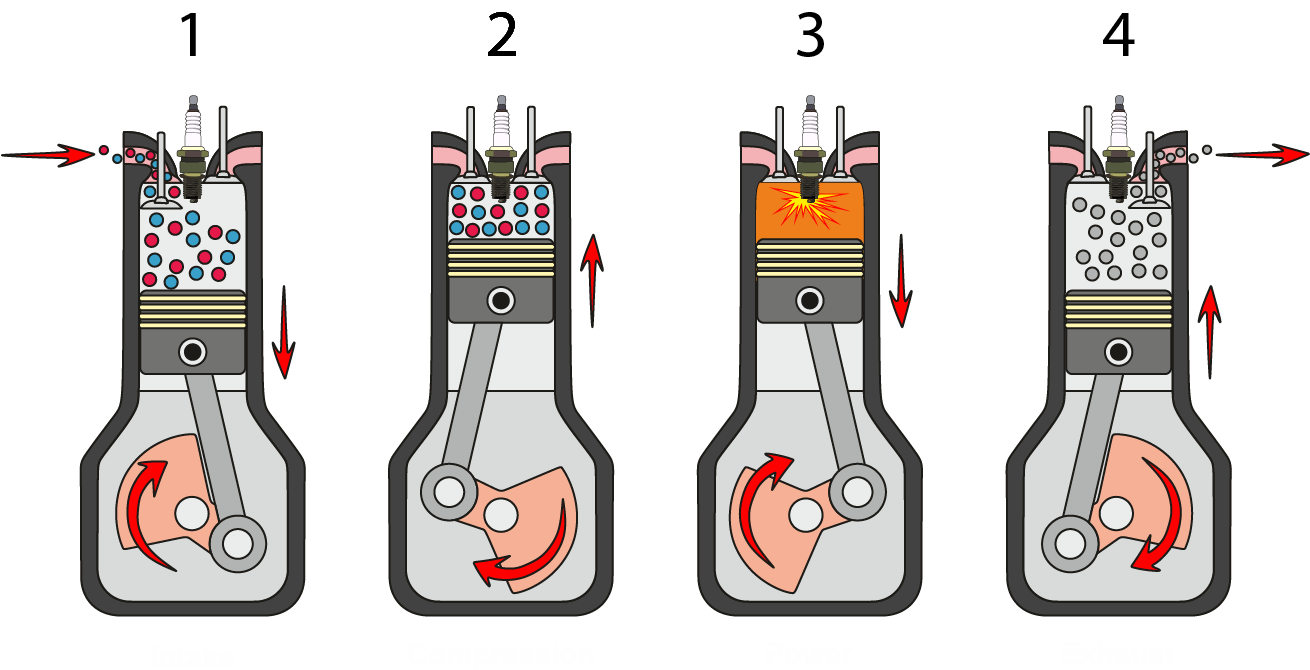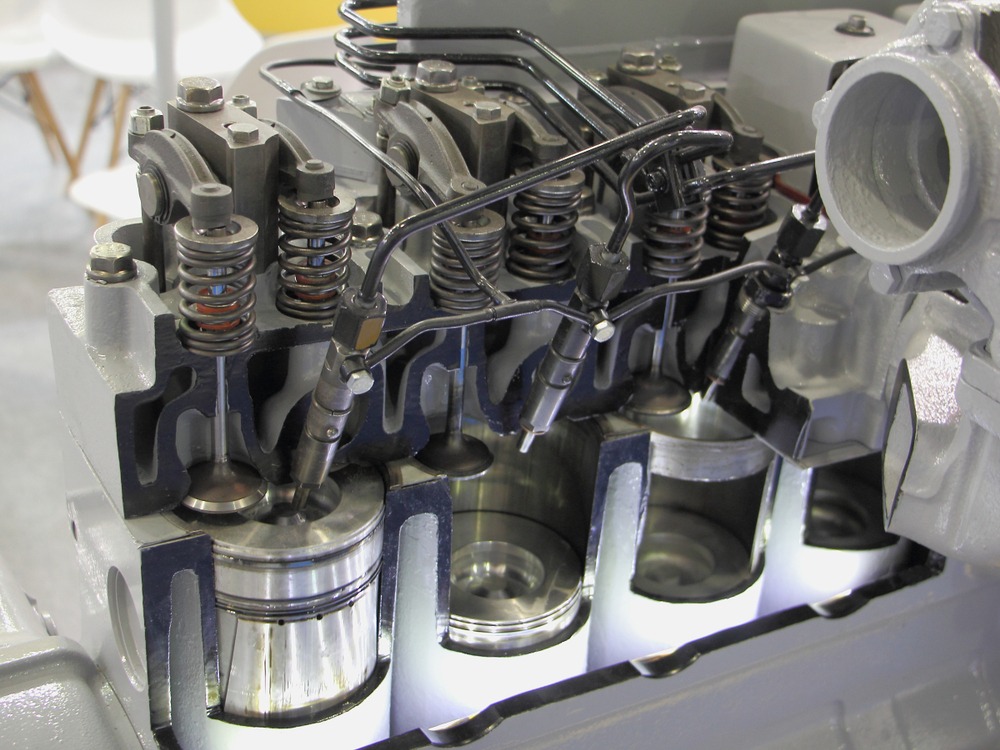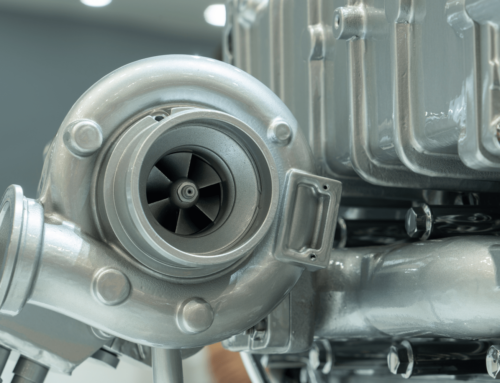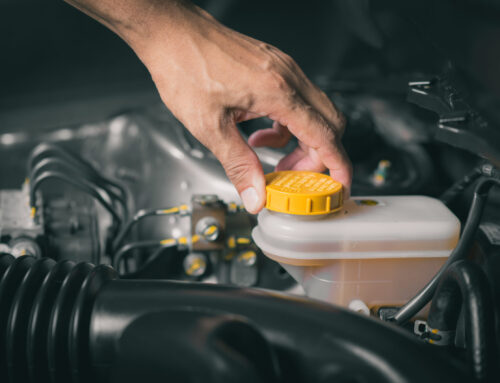Simple maintenance at home
Get ready for the upcoming season and service your lawnmower at home. With simple tips, high-quality oils and preparations, everyone can do it.
Do you know the main difference between a 2-stroke and a 4-stroke engine?
In general, we can divide engines into many categories. If we are talking purely about garden technology, the main division of engines are 2 and 4-stroke. Their differences are fundamental – especially in efficiency, performance and fuel consumption.
2-stroke engines have fewer cylinders than 4-stroke engines, and function as the name implies, in two strokes. The function of a 2-stroke engine, however, consists of all four strokes/periods, but several of them take place simultaneously. The working cycle of this engine takes place during two strokes of the piston and one revolution of the crankshaft. Due to their size, they provide higher performance. However, they also consume more fuel and are noisier than 4-stroke engines.
Advice: Home lawnmower maintenance: Why is it important to properly dilute oil with gasoline in 2-stroke engines? This is because the oil helps cool the cylinders and pistons by providing them proper lubrication. If you do not properly lubricate the cylinder and piston, the metals can wear out excessively due to mutual friction and damage each other, or even melt, causing permanent damage. Therefore, do not forget to use high-quality oil for 2-cylinder engines, follow the instructions of the garden equipment manufacturer, but also the dilution instructions given by the engine oil manufacturer.
On the other hand, 4-stroke engines are usually larger and more complicated than 2-stroke engines. However, they are more efficient in fuel consumption and produce fewer emissions. This means that 4-stroke engines may be less powerful than 2-stroke engines of the same displacement, but are much more efficient in long-term use and less prone to breakdowns.
For an easier understanding of the working cycle of the engine, we can divide it into 4 cycles:
- Intake – when the piston moves down, the cylinder sucks in air through the intake valve.
- Compression (air compression) (stláčanie vzduchu) – the piston compresses the air as it moves up. Moments before the end of the stroke, fuel is injected into the cylinder creating an air-fuel mixture in preparation for ignition, during the power stroke in the next cycle.
- Combustion and expansion – the compressed mixture of fuel and air is ignited with the help of a spark plug (in a gasoline engine) or by heat generated by high compression (diesel engines).This compressed mixture then explodes by burning, pushing and pushing the piston down again.
- Exhaust – burnt fuel and carbon monoxide is pushed by the piston from the cylinder into the exhaust pipe through the exhaust valve.
4-stroke engines in garden technology and their maintenance
As already mentioned, compared to other types of engines, the 4-stroke engine is exceptional as it is able to achieve higher efficiency – power, consume less fuel and emit less emissions into the air. This type of engine is commonly used in cars, lawnmowers, marine engines, generators and other products that require reliable and consistent performance.
A 4-stroke engine operates using four periods/strokes that repeat one after the other in the same order and form one “stroke” of the engine. Each stroke has its purpose and together they transform energy into performance.
Lets describe the biggest advantages of a 4-stroke engine in garden technology:
- Higher efficiency – due to its construction, the 4-stroke engine can provide higher performance with less fuel consumption compared to other types of engines.
- Lower level of noise – the 4-stroke engine is usually less noisy than other types of engines, which makes it suitable for use in populated areas.
- Cleaner emissions – produces fewer emissions than other engine types because it burns fuel more efficiently.
- Greater reliability – is usually less prone to breakdowns and requires less maintenance compared to other types of engines.
- Wider range of applications – the 4-stroke engine has a wide range of applications from cars to lawn mowers, generators and other equipment that require reliable performance.
Garden equipment in home conditions: lawnmower maintenance
You can clean and prepare garden equipment even at home. However, sharpening the cutting knives you should rather leave to professionals at least for safety reasons. But what else can you do yourself? We bring you some tips that you can easily deal with.
Replacing the old oil with new
A completely basic operation that should be repeated every year, at least once or every 50 hours of operation. The best solution is to change it before the arrival of spring. Do not forget that before changing the old oil in your equipment, you should let it warm up for a while. If you have a 4-stroke engine, we recommend the year-round M4T SUPER 5W-40 oil, which is used both in lawn mowers and in snow blowers or other garden equipment, the operation of which is not tied to seasonality.
Inspection/replacement of spark plugs
During the basic inspection of your machinery, it is recommended to also check and clean the spark plugs. When cleaning them, it is ideal to use a steel brush. But you have to be gentle so that you don’t deviate the distance between the electrodes with excess and unwanted pressure.
Cooling system
An important part in the proper functioning of the engine, not only garden equipment. Since most garden equipment is cooled by air, it is necessary to take care of the cleanliness of the cooling surfaces and to get rid of deposits of dirt, dust, mud, grass, etc. Remove the protective engine cover and you can easily clean the blades of the cooling system. This simple mower service will certainly make your work easier during the season and should be among the basic steps of regular maintenance.
Cleaning the air filter
If the filter is dirty, the engine does not receive the necessary amount of air, resulting in poor combustion, in way too rich mixture and causing the engine to become clogged with carbon, the consequences of which can be fatal. If you have a foam filter, you can usually clean it (if it is still usable after the change of seasons), if you have a paper filter, simply replace it. We recommend to change the filter every year, regardless of the type.
Clean and lubricated mechanical parts
For simpler tasks, a professional garage, but also home handymen have a multifunctional spray for lubrication. Effectively lubricates, loosens, protects against corrosion and protects all types of mechanical parts. For more demanding greasing for instance bearings etc. it is also necessary to have special lubricants available, such as the multifunctional lubricant DYNAMAX LTA 2EP, which is characterized by high antioxidancy requirements and can withstand high pressures and temperatures.
Sharpened knives
Everyone knows what is capable of and what is able to handle when servicing the mower. If you do not dare to sharpen the knives and then centering them, it is better to turn for help to professionals.
Advice: Don’t forget about gasoline that has been idle for a long time. When gasoline is not used for a longer time, its properties change and degrades. The high proportion of bio-components in current fuels causes sludge to form at the bottom (canister/tank/bottle), which certainly does not contribute to the proper operation of the engine. Therefore, we recommend the E10 gasoline additive, which extends the life of the gasoline and the entire fuel system.
What are the most common lawnmower failures?
Starter cable is stuck. What should I do?
Owners with manual start have certainly encountered the problem of the starter cable getting stuck. The most frequent cause is an activated safety brake. Therefore, before starting the mower, make sure that it is really switched on.
The mower does not start and the gas tank is full. Where is the problem?
With older fuel, it happens that sludge forms at the bottom of the tank and it clogs some of the parts of the fuel system. Also happens that the filters can be clogged or the spark plugs are worn out.
The mower turned off while working
There can be many reasons, from simply explainable ones to the most difficult faults. The cause may be a lack of fuel, the mower being turned off from the power grid, or the lower part of the mower being clogged with grass. With more serious faults, we would recommend you to visit the nearest service center. However, with all problems, when searching for the failure, definitely make sure that the mower is turned off/unplugged from power grid and do not unnecessarily risk your health when identifying the problem, safety is always first.
The mower is smoking. Is this the final end?
It is more or less common for your lawnmower to smoke. This happens when there is too much oil in the tank, which then spills onto a hot engine. Turn off the mower and check what caused the smoke foundation in your case. If by chance it was not the oil, contact an expert.
Advice for the end: Do not mow the grass in direct sunlight at high temperatures. Freshly cut blades of grass could burn by strong direct radiation. The best time for mowing is early evening, when the temperatures no longer exceed above-standard values.








